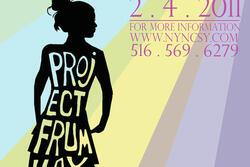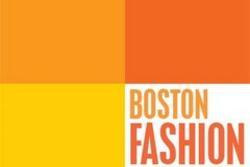Fashion: A Double-Edged Sword
When I shop for clothes, I try to purchase tops that are not exceedingly cropped, low-cut, or sheer. I can’t count the number of times I’ve been excited about a cute dress or shirt, only to flip it over and find that the back is completely cut out. This is disappointing, but it also makes me question my own tendency to judge the Girl with the Crop Top. If the majority of clothes at the mall are cut out, cut-up pieces of fabric, it might not be fair to judge consumers for buying what is being sold.
Meanwhile, at the Modern Orthodox temple where I am a counselor, there are strict rules about the clothing I can wear. My skirt must reach my knees, my shoulders must be covered, and my neckline must not be too low. Crop tops and backless dresses are completely out of the question. This dress code is frustrating to me, because I own many a dress that I deem appropriate, but I’m prohibited from wearing because it shows too much of my thigh. This sends a message that women should not show their bodies in public. It seems to put too much sensitivity on parts of women’s bodies that are not private. If a teen gets used to dressing to these standards, she may become accustomed to hyper-analyzing every inch of skin that is showing. She might believe that she must be constantly covered up because it is not okay for anyone else to see her skin.
It’s important that there be more clothing options for teenagers so that we don’t feel trapped by having to cover up too much—or too little. If the only clothes that are available to me are overly revealing, I might feel like I am being forced to show my skin; I might go so far as to believe I will be shunned by my peers if I don’t. The sad truth is that although the clothes I wear should not define who I am, in a lot of ways, they do.
Ironically, I have the same response to these two extremes: there’s a problem with being overly sensitive about elbows and knees, and there’s a problem with showing skin to attract attention. The Girl with the Crop Top and the Girl in the Maxi Skirt both place undue emphasis on the external. Both attitudes over-sexualize women’s bodies. One dress code desensitizes people towards private parts of the body; sheer tops, short shorts, and plunging necklines can be overly revealing. The other side makes certain body parts seem private that shouldn’t be: hair, elbows, shoulders, knees. Physical features that are not inherently private or sexy adopt a meaning of being taboo. Fashion should be a reflection of a person’s taste and style, but it should not draw attention to—or away from—a person’s physical appearance. The clothing I choose to wear should not define me—I am Eliana, an almost-sixteen year old girl who loves rain and theater and reading, and the outfit I wear is simply an accessory.
This piece was written as part of JWA’s Rising Voices Fellowship.








Well, Eliana, when it com to the dress that you 'deem appropriate' but 'shows too much of my thigh' - the Talmud says: "ÌÑå©ÌÑÛ¢ÌÑå¤ ÌÑÛ÷ÌÑåÌÑå©ÌÑÛ ÌÑå¢ÌÑå¬ÌÑÛ¢ÌÑÛ" based on the verse: "ÌÑÛªÌÑÒÌÑ㢠ÌÑå©ÌÑÛ¢ÌÑå¤...ÌÑå»ÌÑÛªÌÑÒ ÌÑå¢ÌÑå¬ÌÑÛ¢ÌÑå»ÌÑÁ" - see Brachot 24A